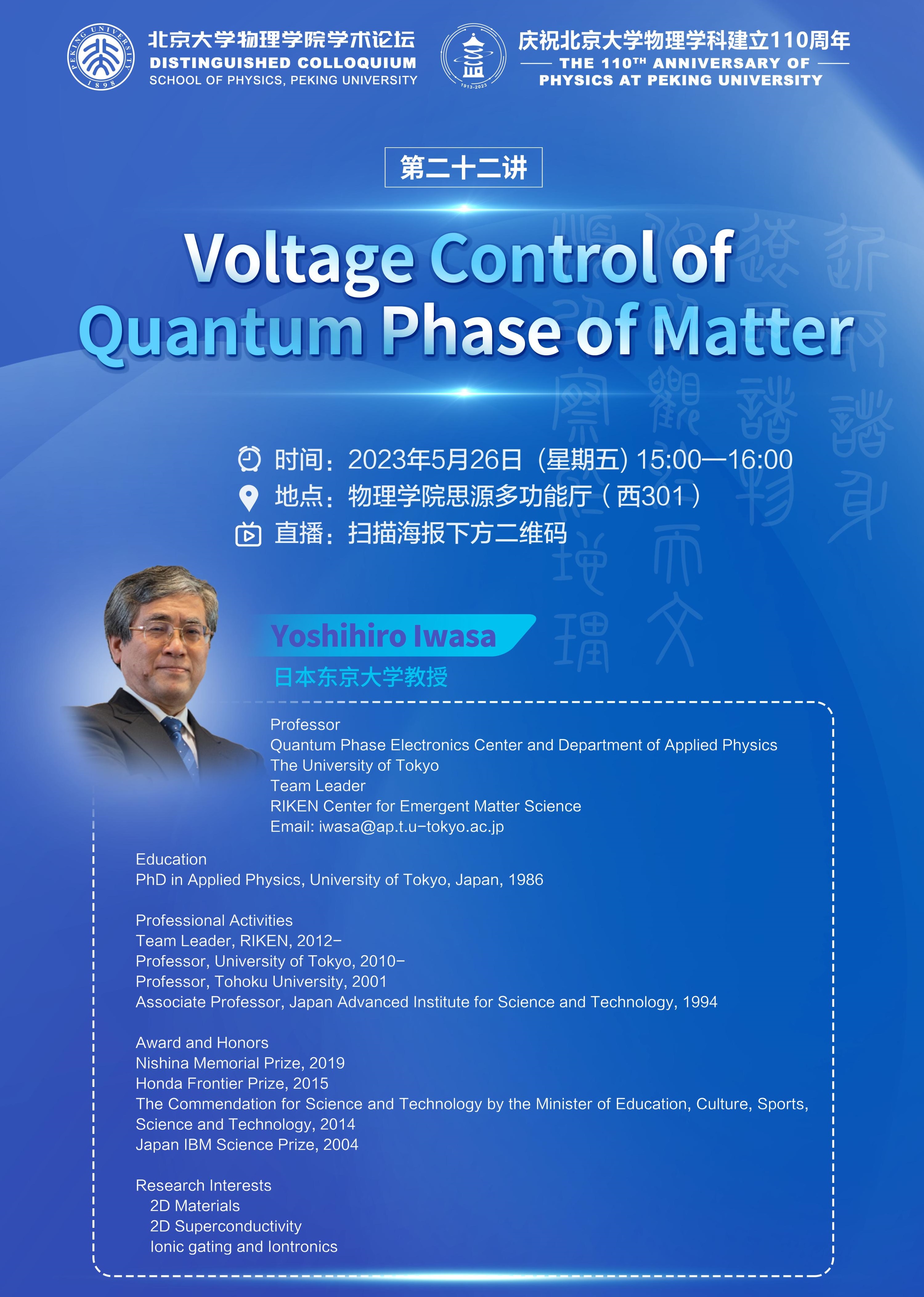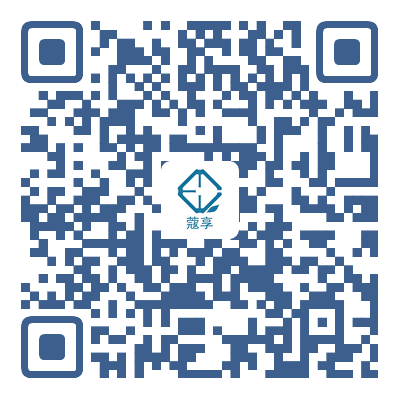Speaker: Yoshihiro Iwasa, Professor, Quantum Phase Electronics Center and Department of Applied Physics, The University of Tokyo, Team Leader, RIKEN Center for Emergent Matter Science
Time: 15:00-16:00 p.m., May 26, 2023, GMT+8
Venue: School of Physics, Room West 301 (Scan the QR code to watch online)
Abstract:
Condensed matter, due to its large number of atoms, exhibits a variety of unexpected quantum phases, including superconductivity, magnetism, correlated insulators, and ferroelectrics, and topological phases. In this lecture, I will give a brief review on the electric field (and more broadly voltage) control of quantum matter, with particular interest in two-dimensional van der Waals materials.
Using the device structure, called field effect transistor (FET), we are able to control the carrier density by application of the gate voltage. Since the carrier density is the key parameter for determining the electronic properties of solids, the voltage can be a knob of tuning the electronics state in principle. We have developed a new transistor by replacing the gate insulator with the ionic conductor (and electrical insulator) more than a decade ago. With this device, we found that the accumulated carrier density is one to two orders of magnitude enhanced, and using this device, we first discovered electric field induced superconductivity in an insulator [1]. We called this device electric double layer transistor (EDLT), and have shown that this device is powerful in electric field control of quantum phases in superconductors [2], Mott insulators [3], and ferromagnets [4].
This electrochemical device enables us to further expand the performance of gating devices [5]. One is the layer-by-layer etching to form the monolayer materials [6]. The other is the intercalation of ions into materials [7]. These extensions further push forward the capability of transistor devices for controlling the quantum phases of matter.
References:
[1] K. Ueno et al., Nat. Mater. 7, 855 (2008).
[2] Y. Saito, T. Nojima and Y. Iwasa, Nat. Rev. Mater. 2, 16094 (2017). .
[3] M. Nakano et al., Nature 487, 459 (2012).
[4] Y. Yamada et al., Science 332, 1065 (2011).
[5] S. Z. Bisri et al, Adv. Mater. 29, 1607054 (2017).
[6] J. Shiogai et al., Nat Phys. 12, 42 (2016).
[7] Y. Nakagawa et al., Science 372, 190 (2021)
Source: School of Physics

